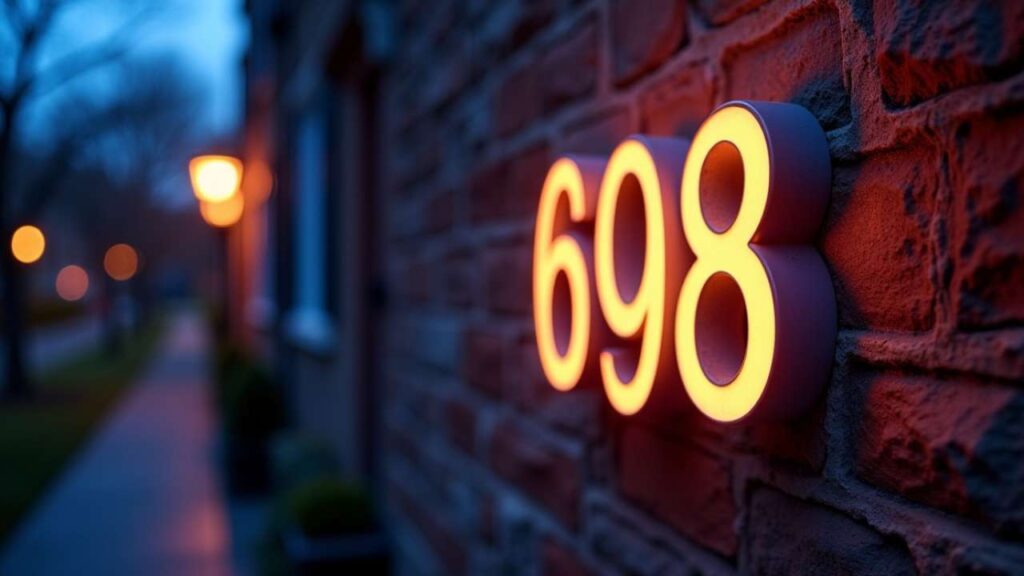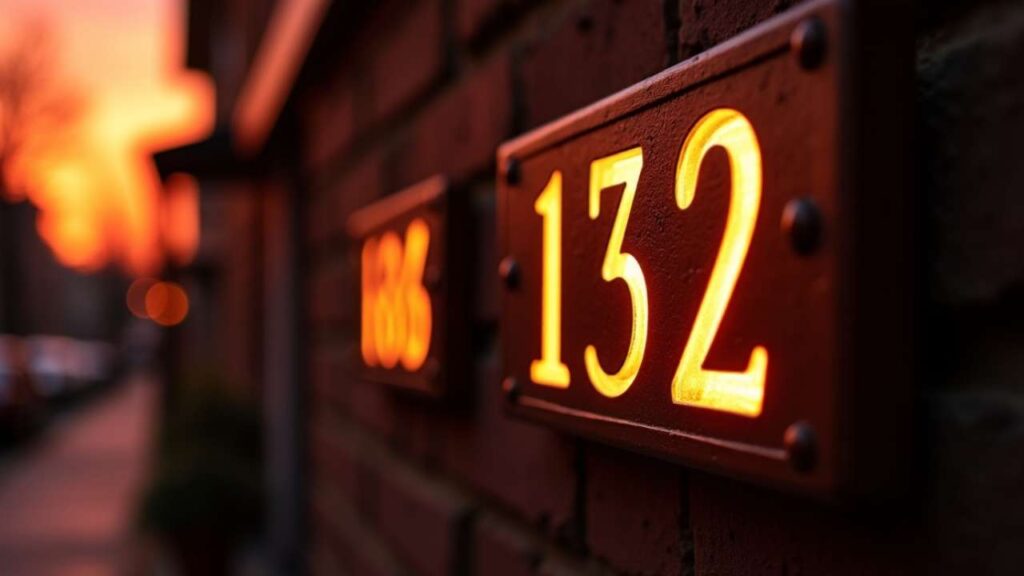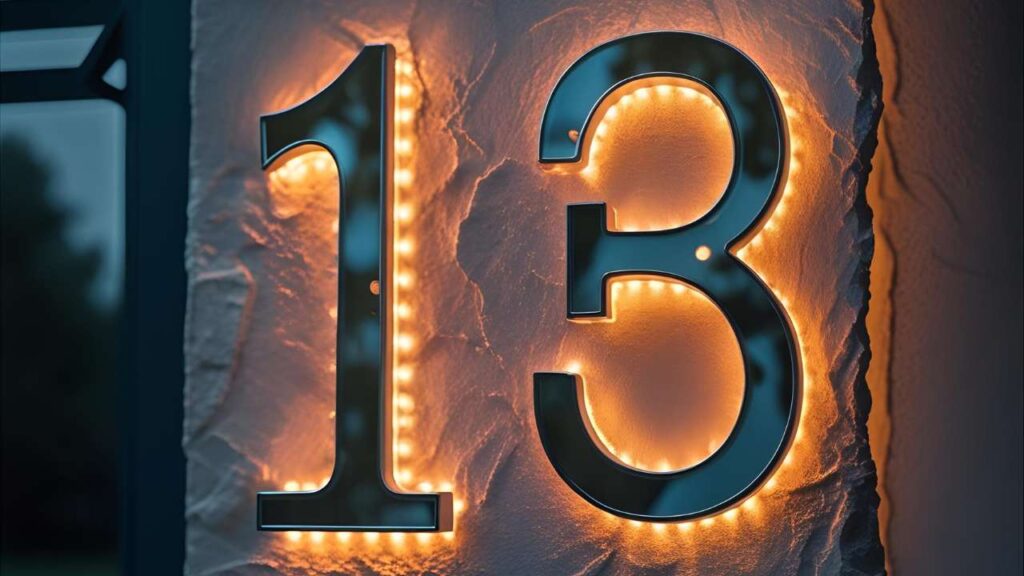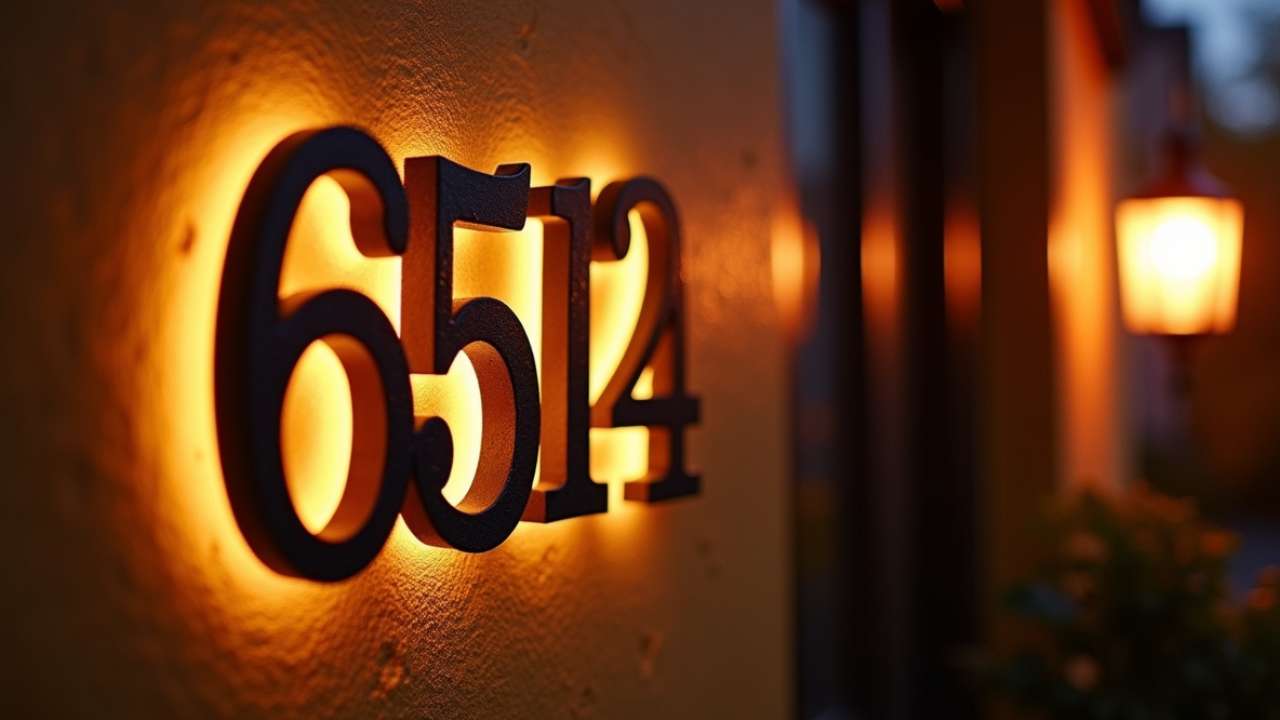House numbers lit up in the background make common addresses a night time reference point. As compared to the customary signage, these bright backlit house numbers signs are made with combined lighting that illuminates an uncanny glow around or behind every figure making it seen immediately in the dark. It is not all about curb appeal but it is a practical safety enhancement to home owners. Emergency first responders, people making deliveries, your guests can easily find your property, even during rain or fog. Current models have weatherproof constructions which are made with 304 stainless steel and IP65 certificated seals to be able to resist decades of outdoor exposure 6. In communities that have limited street lights, it is a compromise that brings aesthetics and functionality together as it makes your address a 24 hour beacon.

Design Choices & Customization
Today’s backlit house numbers cater to every aesthetic, from minimalist to ornate. Homeowners can select:
Font styles (10+ modern options like bold sans-serif or classic script)
Finish colors (matte black, brushed silver, rustic steel, etc.)
Light hues (warm white, cool white, blue, or amber)
Sizing (5″ to 14″ heights for varied visibility needs)
Some brands such as MOLCOVEX go to the extent of making backing boards ready-assembled without any installations required. To pull it together, select a match of the finish of the fixture with your door hardware or outdoor lighting. The glow may be low-key (soft halo) or dramatic (high-contrast silhouettes) and allows you to determine which quality to emphasize elegance or readability.
Solar vs. Wired Power Options
Address numbers are made back lit with flexible sources of power. Solar powered designs utilize sunlight through inconspicuous units, and save it so 3 or more evenings of nighttime light could be used with just 4 hours of sunshine-perfect in good-steward lodges. The hardwired versions are also hooked up to your electrical system so you won not have to change the battery, plus they need professional installation. In between these extremes, plug-in adapters work well in the hands of renters or people who like to do their own work, since they can use outdoor-rated cords hidden in walls. Solar is better in areas that receive much sunlight, and wired systems are reliable in areas where it is cloudy. Even timers or motion sensors are being incorporated on some systems to save up energy.
DIY Installation Made Simple
Installing backlit house numbers is surprisingly accessible. For a basic setup:
Make layout in free software such as Fusion360, PowerPoint to place digits. Laser cut cut numbers on weather proof material (e.g. 6mm plywood or acrylic). Coat pieces by painting with UV resistant spray paint. Scotch-tape LED strips on to the back of each number using a waterproof silicone sealant. Punch a tiny hole in or through your wall to feed wiring (in case of wired power). Fasten the construction by brackets and cover moisture-sensitive edges avoiding moisture seepage 2. The pro tip is to place the lights where there is no shadow, and to check the Lambert angles at the time of dusk. To get the results faster, use ready-made kits which have the template guidelines.

Backlit House Numbers Product Showcase
Leading products like MOLCOVEX’s Custom LED House Numbers exemplify innovation. Crafted from rust-proof 304 stainless steel, they feature:
Dual power support (solar panel-ready or plug-in)
5+ lighting modes with adjustable brightness
Pre-drilled mounting boards for one-hour installations
Expensive on the high end, to the tune of $25–$50 per digit, these units focus on longevity – they boast an IP65 rating and resist rain, snow and UV damage. User reviews say their “shipping is crazy fast” and “visibility is crystal clear from 100+ feet” 6. If you’re looking for more budget options, acrylic laser-cut kits of similar customization can be found under $30.
Maintenance & Care Tips
Keep your investment by easy maintenance. To avoid haze, clean acrylic with a microfiber cloth and vinegar solution once in every quarter. Periodically look at silicone seals once a year and apply caulk to any spots that have a gap. Gently remove accumulation in snowy areas which can cause LED stress. In case of the solar models, panels should be wiped after every month to ensure charging efficiency. In event that lights go dim sooner than expected then verify connection against corrosion, or transformer benefiting. Most quality units survive 5-7 years; to prolong survival is to avoid rough pressure washers and caustic cleaners 6.
Cost vs. Value Analysis
While basic illuminated numbers start at $20, premium custom units run $100–$300. This investment pays dividends:
Safety ROI: Reduces emergency response delays (critical during medical/fire incidents).
Property Value: Enhances curb appeal for potential buyers; 75% of realtors note well-lit addresses attract attention 6.
Energy Savings: Solar models cost $0.03/year to run vs. wired alternatives.

Backlit Beats Numbers
Conventional plaques disappear at night and the visitor has to strain his/her eyes or to guess. Solutions to this problem have come in the form of backlit options, whose clarity works twenty-four hours a day and fits right into connected home living. They are all fire code-compliant to have visible addresses. In contrast to spotlights, LED backlight does not create shadows and glare since the beam is even. This is not a luxury, which can be done in multi-unit buildings and in rural homes, it simply saves lives. As one customer established: “customers now locate us immediately even during pitch black winters 6.
Difference Table
| Feature | Traditional Numbers | Backlit House Numbers | Real-Life Impact |
| Night Visibility | Disappears after dark | Glows softly 24/7 | EMTs/food delivery find you instantly |
| Power Options | None needed | Solar or Wired or Plug-in | Solar = $0.03/year energy cost 🌱 |
| Installation | 10-min screw-on | DIY-friendly (1-2 hours) or pro install | Pre-drilled kits = renter-friendly |
| Extreme Weather | Fades/rusts over time | IP65-rated stainless steel | Survives blizzards & monsoons ❄️🌧️ |
| Customization | Limited font/color choices | 10+ fonts, 5 light colors, sizes 5″-14″ | Match your porch lights or door hardware |
| Safety ROI | Emergency responders struggle | 100+ ft. visibility in fog/rain | Critical during medical emergencies ⚕️ |
| Curb Appeal | Basic functional look | Modern “wow factor” glow | 75% realtors say it attracts buyers 🏡 |
| Upkeep | Occasional wipe-down | Annual seal check + solar panel cleaning | 5-7 year lifespan with care |
Conclusion
Backlit house numbers combine style, security and novelty in a single exterior add-on. They have options available in DIY kits and commercial smart models to meet all budgets and every home. In addition to being functional, they increase the curb value and more so, they promote the presence of local businesses with their clever utilization of SEO. Are you ready to shine? Choose weatherproof materials, fit sizing, and power options that are best according to your climate, then have your address leave a long-lasting first impression.
FAQ’s
1. Why choose backlit over regular numbers?
Safety meets style! They make your address visible 24/7—no more frustrated delivery drivers or EMTs struggling to find you at night. Plus, they add modern curb appeal.
2. Can renters install them without drilling?
Absolutely! Solar or plug-in options stick with adhesive or hang over doors. No wiring = no landlord headaches. Remove them cleanly when you move.
3. Will solar numbers work in cloudy areas?
Yes, but wired is better for gray climates. Solar models need just 4 hours of sun for 3+ nights of glow. In super cloudy zones? Opt for plug-in backups.
4. Are they worth the cost?
Think lifesaver, not luxury. For $20-$50/digit, you get faster emergency response (priceless) + boosted home value. Solar costs pennies yearly to run.
5. How often do they need upkeep?
Almost zero hassle! Wipe the panel or numbers 2-3 times a year. Check seals before winter. That’s it—most last 5-7 years!
